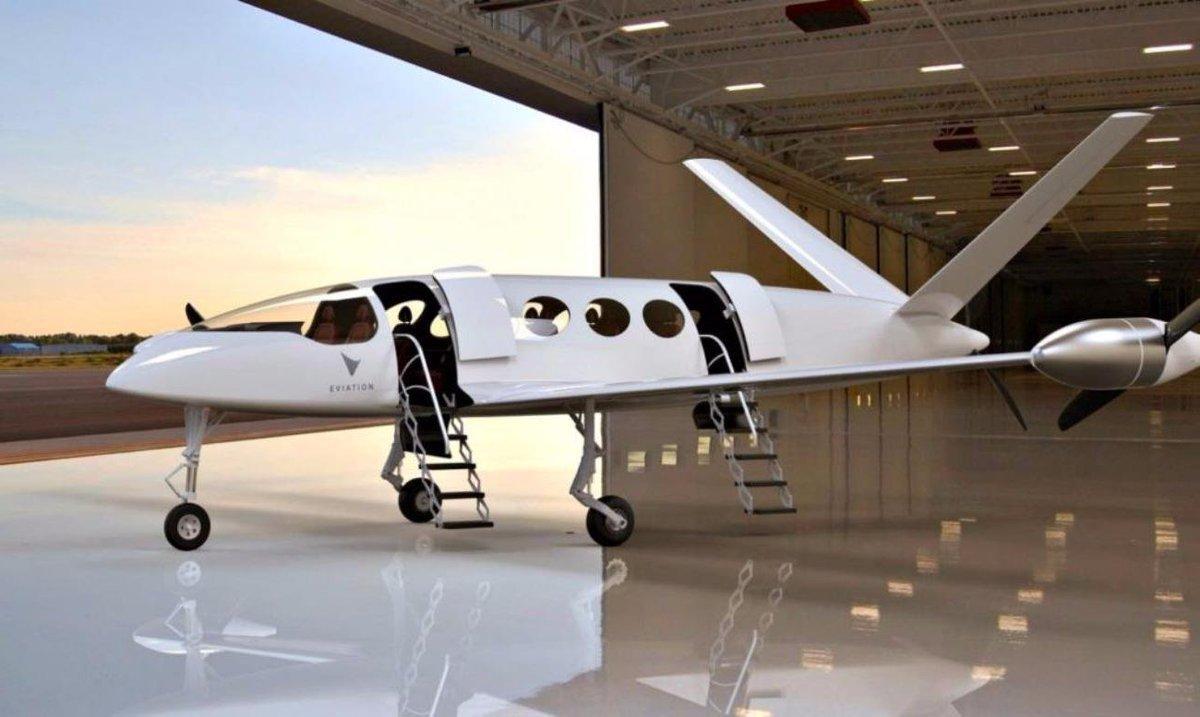Electric dreams: at last a glimpse of reality
The problem for designers of clean planes: boosting the power to weight ratio of the batteries

Your support helps us to tell the story
From reproductive rights to climate change to Big Tech, The Independent is on the ground when the story is developing. Whether it's investigating the financials of Elon Musk's pro-Trump PAC or producing our latest documentary, 'The A Word', which shines a light on the American women fighting for reproductive rights, we know how important it is to parse out the facts from the messaging.
At such a critical moment in US history, we need reporters on the ground. Your donation allows us to keep sending journalists to speak to both sides of the story.
The Independent is trusted by Americans across the entire political spectrum. And unlike many other quality news outlets, we choose not to lock Americans out of our reporting and analysis with paywalls. We believe quality journalism should be available to everyone, paid for by those who can afford it.
Your support makes all the difference.Over a weekend when everyone is gazing back into space, allow me a glance towards the future of aviation.
The most exciting technological development for your flying and mine in the coming decades is nothing to do with high speed or ultra-long range. Rather, it is about slow, short but clean hops.
Electric cars are easy. Weight is not too much of an issue, extremes of power are unnecessary and when the battery starts running down you can safely and easily pull into one of the increasing number of service stations with fast-charge facilities, buy a cup of tea and read an article like this before you motor on, quietly.
My first experience this week of a fully electric car, a Nissan Leaf on the A5 in north Wales this week, made me realise that it is an extremely civilised form of transport. So what is to stop the same basic concept expanding to aviation? Physics.
While small electric-powered craft have made successful flights, the challenge is to create planes that are big enough and have sufficient range to compete with conventional aircraft.
The main issue is that aviation fuel contains a vast amount of energy in each kilogram, and has the added bonus of vanishing once it has done its work – conveniently reducing the weight of the plane, and therefore its fuel burn.
The problem for designers of clean planes: boosting the power-to-weight ratio of the batteries. Even the most efficient cells struggle to deliver more than a tiny fraction of hydrocarbon power from the equivalent weight.
Wright Electric, which aims “for every short flight to be electric within 20 years”, candidly admits that its plans depend on the weight (and volume) of batteries shrinking while power remains constant: “With present technology, we’d quickly use up all our energy at takeoff and never get anywhere.”
Of the many start-ups seeking to revolutionise air travel, Wright was the first to team up with a leading UK airline, easyJet. But the budget airline will be strictly kerosene powered for the foreseeable future.
Across at Heathrow, the airport’s boss says the first electric-hybrid aircraft to use Heathrow Airport will escape landing charges for a year – a prize worth up to £1m – and hopes it will be touching down by 2030. Note the “hybrid” – with the punch of hydrocarbons pushing the plane into the sky, before batteries taking care of the cruise.
But at the Paris Air Show in June, the tiny US airline Cape Air signed a “letter of intent” for 10 or more nine-seater commuter planes made by Eviation.
The name of the plane is Alice. The aircraft manufacturer says: “Alice uses distributed propulsion with one main pusher propeller at the tail and two pusher propellers at the wingtips to reduce drag, create redundancy, and improve efficiency.
“We’re bridging distances and opening a range of new destinations accessible for on-demand transportation by enabling emission-free air travel for the price of a train ticket.”
Its electric plane, called Alice, will fly up to 650 miles at an impressive 300mph.
Cape Air is the perfect customer. It is based in Hyannis on Cape Cod, Massachusetts, and mainly flies rich people to and from their homes in Nantucket and Martha’s Vineyard. The airline currently uses small Cessna 402 aircraft, with about the same payload.
The fare for a Friday evening 91-mile, 48-minute hop between Boston and Nantucket is an impressive $339 (£271), which would help pay the $4m (£3.2m) price tag on those planes.
A letter of intent, let me remind you, is a non-binding order; British Airways’ parent company, IAG, signed one with Boeing for 200 737 Max jets at the same French fair.
But if commercial electric aviation is to flourish, it will need to start with short hops for wealthy individuals. Tomorrow Cape Cod – perhaps the day after, the Isles of Scilly.
Join our commenting forum
Join thought-provoking conversations, follow other Independent readers and see their replies
Comments